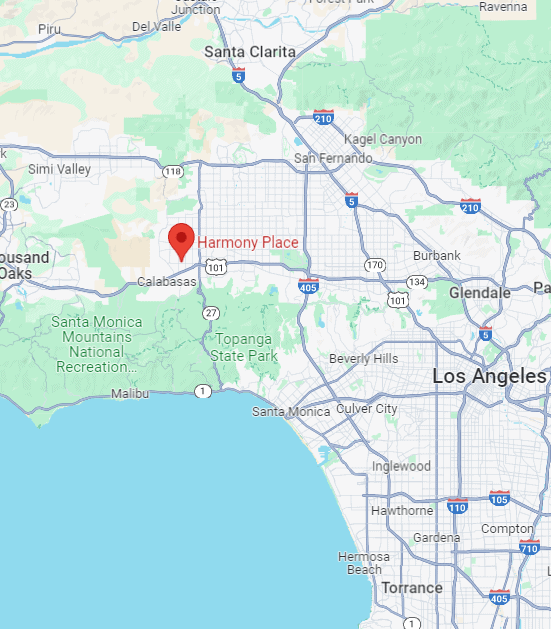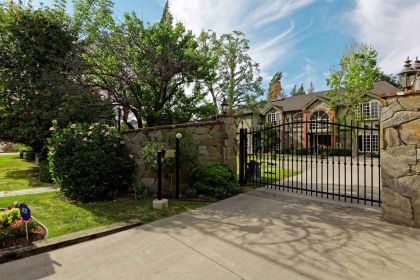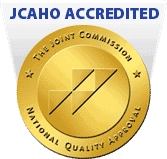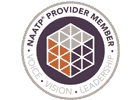Buprenorphine Medication for Addiction Treatment in California
Harmony Place operates several rehab centers that provide Medication-Assisted Treatment (MAT), such as buprenorphine treatment for opioid addiction in California. Our remote and confidential buprenorphine services help you attain sobriety safely under medical supervision. If you require medication-assisted treatment with buprenorphine, our addiction treatment in California can guide you through the entire recovery process.
If you’re seeking buprenorphine medication-assisted treatment in California, contact us at Harmony Place. Several substance abuse treatment programs in California offer medication-assisted recovery. This page will help you understand the benefits of a buprenorphine MAT program for opioid addiction, the cost of California buprenorphine rehab programs, and how to obtain a same-day buprenorphine prescription. It also explains how to locate buprenorphine clinics for addiction recovery in California.
Why Is Buprenorphine Prescribed?
Buprenorphine is given to you for opioid use disorder treatment because it alleviates withdrawal symptoms and cravings without creating the same powerful high as other opioids. MAT clinics will often utilize brand-name opioid addiction medication like Suboxone (which combines buprenorphine and naloxone).
Medication-assisted interventions, such as Suboxone treatment or buprenorphine treatment in California, aid you in controlling dependence more safely and effectively, promoting long-term recovery.
Besides being an opioid dependence medication, buprenorphine might also be prescribed to you for certain chronic pain conditions. Its partial opioid agonist characteristics make it less prone to misuse compared to full opioids. By balancing brain chemistry and lowering the risk of relapse, buprenorphine plays a crucial role in many evidence-based medication-assisted support programs. If you think you may benefit from buprenorphine treatment in California, contact us at Harmony Place.
What Is Medication-Assisted Treatment (MAT)?
Medication-Assisted Treatment (MAT) is a proven method for addressing substance use disorders that integrates FDA-approved medications with therapy and counseling. This approach tackles the physical reliance and the mental aspects of addiction, helping you achieve and maintain long-term recovery. Substance use disorder medications like buprenorphine treatment, methadone maintenance, and naltrexone therapy are frequently used to alleviate cravings and withdrawal symptoms.
In addition to alleviating physical symptoms, medication-assisted therapy enhances overall stability by reducing relapse risk, boosting daily functioning, and fostering greater participation in treatment. Healthcare providers commonly apply MAT for alcohol use disorder or as an opioid recovery medication. MAT for addiction treatment, focusing on both the biological and behavioral elements of addiction, offers a thorough treatment plan that encourages healthier and more enduring recovery outcomes.
If you want more information about medication-assisted detox treatment, contact us at Harmony Place. Our California rehab centers for drug and alcohol addiction specialize in medication-assisted treatment.
Why Is Buprenorphine Considered Beneficial in a Medication-Assisted Treatment Program?
In a Medication-Assisted Treatment (MAT) program, you’ll find buprenorphine advantageous because it helps you manage cravings and opioid withdrawal symptoms. It offers a milder euphoric effect compared to full opioids, reducing the likelihood of misuse. This opioid replacement therapy can help you stabilize your brain chemistry, decreasing the chances of relapse and overdose as you recover.
Moreover, you can receive same-day buprenorphine prescriptions in regular office settings, making it more accessible than medications like methadone, which often require visits to specialized clinics. Its role in supporting your long-term recovery, alongside the blend of MAT counseling and behavioral therapies, makes buprenorphine an invaluable asset in MAT programs.
If you want to learn more about buprenorphine treatment in California, contact us at Harmony Place. Our experienced team will begin with a free assessment to determine if you require outpatient treatment services or our inpatient rehab facilities in California.
Statistics About MAT Programs in California
In California, Medication-Assisted Treatment (MAT) initiatives are expanding, but notable access challenges remain. By January 2025, the California Department of Health Care Services (DHCS) provided nearly $65.4 million to 91 organizations to enhance MAT infrastructure and boost access to medications for opioid use disorder treatment.
Even with this funding, 2022 data reveal that 119,271 Californians were prescribed buprenorphine, with a mere 4.3% prescribed by emergency medicine providers. Furthermore, emergency clinicians began only 5.3% of initial buprenorphine prescriptions, indicating opportunities to improve immediate access during urgent care situations.
Distribution figures also suggest room for improvement. In 2023, California’s buprenorphine distribution rate was 1.7 per 100 people, which shows limited availability compared to the state’s demand. Pharmacy access remains a significant hurdle, as only 31% of California pharmacies carry buprenorphine. Despite these obstacles, the success of buprenorphine in reducing OUD-related issues is evident: in 2024, U.S. opioid overdose deaths fell by almost 27%, reaching their lowest since 2019, mainly due to better MAT access and increased harm-reduction efforts. California’s continued investments aim to bridge these gaps, enabling you and others to access life-saving treatments.

We Will Check Your Insurance
Three Phases of Medication-Assisted Treatment
Medication-Assisted Treatment (MAT) usually unfolds in three distinct stages that guide you from the early stages of recovery to long-term management. Each phase is tailored to meet different needs, from easing immediate withdrawal symptoms to fostering lasting stability. These stages help you gradually adapt to treatment, enhance daily life, and lower the chance of relapse.
It starts with induction, then moves to stabilization, and finally maintenance. Each stage emphasizes both medical and behavioral components, ensuring that treatment tackles not just physical dependence but also the underlying causes of substance use. This step-by-step approach helps you build confidence in your medication-assisted recovery while developing healthier coping mechanisms.
Induction Phase
The induction phase marks the initial step, often starting when you experience mild to moderate withdrawal symptoms. At this point, California detox and rehab programs will administer medications like buprenorphine or methadone to help alleviate withdrawal discomfort and lessen cravings. The aim is to begin treatment safely, minimize any pain, and prevent relapse.
Stabilization Phase
During the stabilization stage, you have adapted to the medication and no longer endure severe withdrawal or intense cravings. Dosages might be adjusted to optimize outcomes. At this stage, you often begin to concentrate more on MAT counseling, therapy, and lifestyle modifications, as your physical symptoms are managed.
Maintenance Phase
The maintenance stage of pharmacotherapy for addiction focuses on enduring recovery. You will stay on a consistent, effective dosage of medication while continuing with therapy and support services. This phase highlights the importance of developing lasting habits, managing triggers, and avoiding relapse. For many, this period may last for months or even years, depending on individual needs.

Buprenorphine Medication Treatment Programs in California
Buprenorphine treatment in California is crucial in assisting you in overcoming opioid dependence by minimizing cravings and alleviating withdrawal symptoms. Our residential addiction recovery in California provides access to a wide range of services, including medical detox, inpatient care, dual diagnosis MAT for co-occurring mental health issues, and medication-assisted treatment with buprenorphine.
This blend of MAT and counseling services ensures that your recovery is addressed from all angles—physically, emotionally, and psychologically. If you are struggling with opioid addiction, we offer a nurturing environment where personalized treatment plans can lead to lasting recovery.
At Harmony Place, we are often asked, “Where can I find drug and alcohol rehab near me in California that offers buprenorphine treatment?” There are many buprenorphine clinics for addiction recovery in California. Our dedicated team is committed to finding the right buprenorphine MAT program for opioid addiction and supporting you through each phase of your medication-assisted recovery. Don’t hesitate to take the first step—call (855) 652-9048 to learn more about our buprenorphine treatment for opioid addiction in California and start on the path to a healthier future.
Harmony Place
23041 Hatteras St.
Woodland Hills, CA 91367
Harmony Place East
22913 Burbank Blvd.
Woodland Hills, CA 91367
Programs for Addiction Treatment That Work in Combination with Buprenorphine
California buprenorphine rehab programs that combine buprenorphine with organized addiction therapy provide you with the most significant opportunity for sustained recovery. Medication-assisted treatment with buprenorphine within inpatient programs or outpatient rehab services in California can help you achieve sobriety. Here are several effective treatment options that complement buprenorphine to tackle the intricacies of addiction:
Partial Hospitalization Programs
Partial Hospitalization Programs (PHPs) offer a well-organized level of care for you if you require more assistance than typical outpatient treatment but don’t need round-the-clock supervision. You typically attend sessions for several hours per day, four to six days a week, under the supervision of medical professionals, receiving therapy, medication management, and other necessary treatments.
Since PHPs let you return home in the evenings, there is a balance between thorough care and personal independence. You benefit from close medical observation while also learning to apply recovery skills in your everyday life. If you’re transitioning from inpatient rehab or detox, PHPs can be a crucial next step in maintaining stability while continuing buprenorphine treatment in California.
Intensive Outpatient Programs
Intensive Outpatient Programs (IOPs) are perfect if you need ongoing structured assistance but are stable enough to avoid inpatient rehab facilities in California. You would attend treatment sessions several times a week, often in the evenings, while continuing to live at home. This setup allows you to manage family, work, or school responsibilities while still receiving comprehensive treatment.
The inpatient-style intensity of IOPs—through frequent group therapy, education, and relapse-prevention planning—provides you with a solid foundation for success. When paired with medication-assisted treatment with buprenorphine, IOPs ensure you receive consistent medical and therapeutic guidance without needing to stay at a facility full-time.
Counseling and Therapy Sessions
Mediation-assisted therapy and counseling sessions are a fundamental part of outpatient rehab services in California. Through one-on-one counseling, group discussions, or family therapy, you learn to tackle the underlying emotional, psychological, and social elements of addiction. Outpatient therapy offers excellent flexibility, letting you fit sessions into your daily schedule.
If you’re taking buprenorphine medication-assisted treatment in California, outpatient counseling ensures that this opioid addiction medication is complemented by skill enhancement and personal development. You focus on creating coping skills, mending relationships, and dealing with any co-occurring mental health issues—crucial steps for sustaining long-term recovery outside a structured treatment environment.
Online Addiction Programs
Online addiction programs offer you a practical alternative for outpatient rehab services in California, especially if you encounter obstacles to attending in-person sessions due to factors like distance, scheduling issues, or privacy needs. These programs might feature virtual counseling, support groups, and educational modules designed to aid your recovery.
When paired with buprenorphine treatment, these online options enhance the accessibility and convenience of ongoing care. You can participate in therapy from the comfort of your home while maintaining connections with licensed professionals and peer support networks. This adaptability makes online programs an essential resource for you if you’re dedicated to medication-assisted recovery but require flexible treatment solutions.
Which Substance Use Disorder Can Buprenorphine Help Treat?
Buprenorphine is mainly prescribed to assist in opioid use disorder treatment by alleviating withdrawal discomfort and cravings. Although it doesn’t cure addiction, it provides a safer route to recovery when paired with counseling and support. Here are some examples of opioids where buprenorphine treatment in California can be a valuable part of your care, though this isn’t an exhaustive list:
Heroin
Heroin is a rapidly acting opioid that frequently results in strong addiction because of its powerful euphoric sensations. Buprenorphine treatment in California can assist you in gradually stopping heroin use by alleviating withdrawal symptoms and diminishing cravings, making the recovery easier to handle.
Fentanyl
Fentanyl, a man-made opioid, is much more potent than heroin and is frequently associated with unintentional overdoses. You might find buprenorphine medication-assisted treatment in California to be a safer option as it can help stabilize your brain’s opioid receptors, assist in managing cravings, and reduce the likelihood of relapse.
Oxycodone (OxyContin)
Oxycodone, often given for alleviating pain, has the potential for misuse and addiction because of its potent effects. Buprenorphine treatment in California aids your recovery by lessening physical dependence and withdrawal symptoms linked to oxycodone, enabling you to concentrate on long-term sobriety.
Morphine
Morphine is a naturally occurring opioid commonly employed in medical environments for pain relief, yet it carries a high risk of addiction. You can use buprenorphine as a regulated method to gradually reduce reliance on morphine, easing withdrawal symptoms and encouraging stability throughout your recovery.

Does Insurance Cover Buprenorphine Treatment in California?
Health insurance providers typically include coverage for buprenorphine treatment in California, but the specifics depend on your policy and provider. Both private insurance companies and government-funded programs, such as Medi-Cal, are required to provide some degree of support for Medication-Assisted Treatment (MAT), including buprenorphine, as mandated by state and federal mental health parity regulations.
Typically, your health plan will cover the opioid addiction medication itself, along with related services such as doctor appointments, therapy sessions, and laboratory tests. However, the specifics—such as copay amounts, requirements for prior authorization, or duration limits for treatment—can differ significantly.
If you’re considering starting buprenorphine treatment in California, it’s wise to review your insurance policy and verify coverage thoroughly. Contact us at Harmony Place to avoid any unexpected expenses, whether you require short or long-term rehab programs in California.
What Steps Are Needed to Begin Buprenorphine Maintenance via MAT?
To start buprenorphine maintenance with Medication-Assisted Treatment (MAT), you usually begin by having a medical evaluation with a qualified provider. This involves reviewing your substance use background, current health status, and withdrawal condition. Once you’re cleared, the provider will prescribe buprenorphine and oversee the induction, stabilization, and maintenance stages to support your lasting recovery.
The process typically begins with a meeting to determine if buprenorphine is a suitable treatment option for you. You should be experiencing mild to moderate withdrawal before taking your first dose to avoid precipitated withdrawal. After induction, your dosage is fine-tuned until your cravings and withdrawal symptoms are effectively managed.
Continual care is also a crucial aspect of a buprenorphine MAT program for opioid addiction. You might attend therapy, counseling, or support groups along with your buprenorphine treatment in California. Regular check-ins with your provider ensure that the treatment remains effective, with adjustments made as necessary to help you maintain your recovery and prevent relapse. If you want to learn more about buprenorphine treatment for opioid addiction in California, contact us at Harmony Place.
How Much Does Buprenorphine Treatment Typically Cost in California?
The cost of buprenorphine medication-assisted treatment in California will depend on several factors, including whether you are insured, the MAT clinic you select, and the level of care you require. If you lack insurance coverage, outpatient MAT programs can range from $1,000 to $15,000 per month.
Programs for residential addiction recovery in California that incorporate medication-assisted treatment with buprenorphine are more expensive, with the average cost falling between $30,000 and $60,000 for 30 days.
If you are searching for affordable addiction treatment in California that offers remote and confidential buprenorphine services, contact our hotline to connect with our qualified team.

How to Check Your Insurance for Buprenorphine MAT at Harmony Place
If you’re thinking about buprenorphine medication-assisted treatment in California at Harmony Place, your initial step should be to confirm your insurance coverage. Many insurance policies include MAT, but the details may vary depending on your provider and plan. Our skilled admissions team can assist you through the procedure, address questions about coverage, and clarify any out-of-pocket expenses.
To verify your insurance and initiate the admissions process, call (855) 652-9048. We will help you understand your options and begin the buprenorphine treatment in California that you require.
Los Angeles Medication-Assisted Recovery Program Options
Harmony Place is a leading rehab center in Los Angeles, California offering advanced Medication-Assisted Treatment for opioid addiction. Our clinical team uses medications like Suboxone, Methadone, and Buprenorphine to manage cravings and prevent relapse. Review the links below for more information about each MAT option we provide.
- Inpatient Rehab Los Angeles
- Intensive Outpatient Program Los Angeles
- Evening Intensive Outpatient Program
- Medication Assisted Treatment Los Angeles
- Outpatient Rehab Program Los Angeles
- Los Angeles Partial Hospitalization Program
- Medically Assisted Detox LA
- Sober Living Homes and Halfway Houses
- Clinical Care Los Angeles
- Family Therapy Rehab Program
- Couples Rehab Los Angeles
- Men’s Addiction Rehab California
- Women’s Rehab Center SoCal
- Addiction Treatment for Veterans
- Short-Term Addiction Rehab
- Long-Term Addiction Rehab
- Private Luxury Rehab Los Angeles
- Faith-Based Rehab Programs
- Non-Faith-Based Rehab
- Rehab for Professionals LA
- Rehab Aftercare Alumni Programs
Statistics on Buprenorphine Programs in California
- In January 2025, the California Department of Health Care Services (DHCS) allocated nearly $65.4 million to 91 groups to strengthen this framework, enhancing the availability of medications for opioid use disorder treatment throughout the state.
- In 2022, 119,271 people in California were prescribed buprenorphine for opioid use disorder treatment. Of these, 5,150 (4.3%) obtained their prescription from an emergency medicine professional. Furthermore, 5.3% of initial buprenorphine prescriptions were started by emergency clinicians.
- In 2023, California’s buprenorphine distribution rate was 1.7 for every 100 individuals, suggesting a requirement for greater availability of this treatment.
- Although buprenorphine treatment is highly effective for treating OUD, less than 50% of pharmacies in the U.S. offer it. In California, just 31% of pharmacies had buprenorphine available, whereas 86% in Maine did. This restricted access is partly due to stringent regulations and the special prescribing license that doctors require.
- In 2024, U.S. opioid overdose fatalities fell significantly by almost 27%, reaching the lowest point since 2019. This decrease is mainly credited to improved availability of medication-assisted treatment with buprenorphine, along with strengthened harm-reduction initiatives.


















